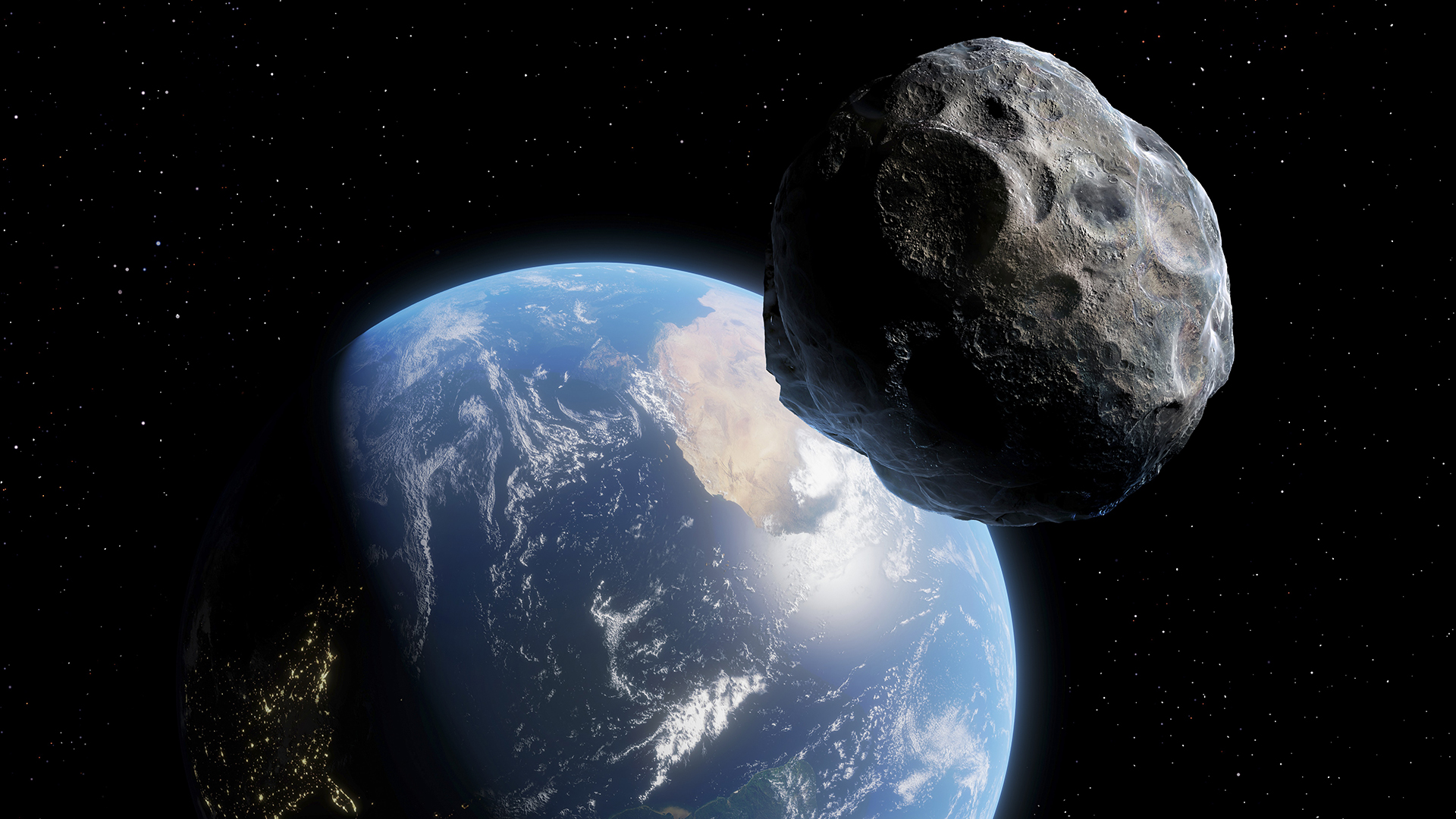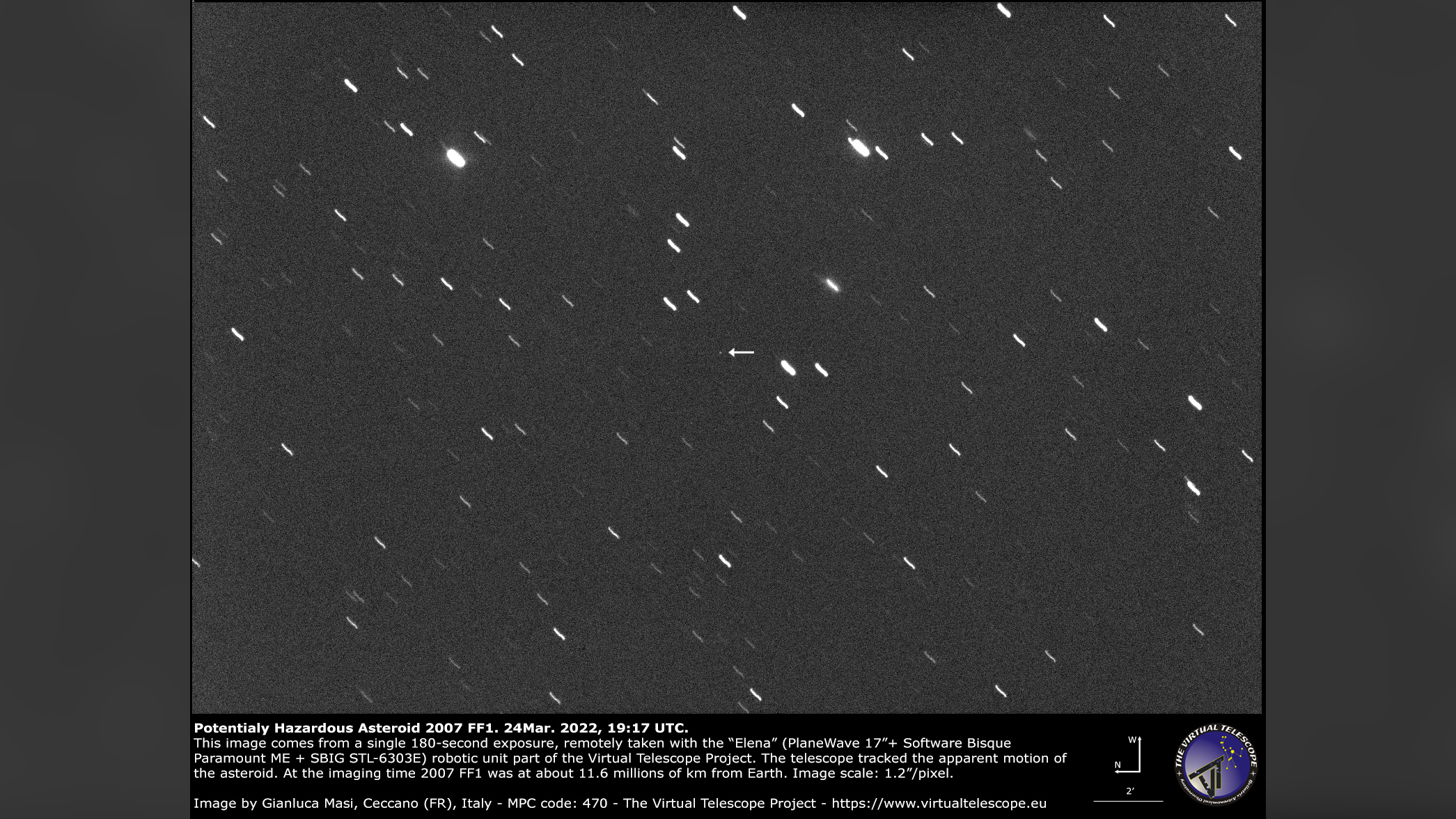'Potentially hazardous asteroid' will make its closest-ever approach to Earth on April Fools' Day (yes, really)
The space rock is traveling around 29,800 mph (47,950 km/h).

Astronomers have confirmed that a "potentially hazardous" asteroid is set to make its closest-ever approach to Earth this Friday (April 1). However, there is no need to panic; astronomers say the massive space rock will miss us by around 4.6 million miles (7.4 million kilometers).
The asteroid, known as 2007 FF1, is between 360 feet and 656 feet (110 and 260 meters) in diameter, according to SpaceReference.com, a database that compiles information from NASA's Jet Propulsion Laboratory in California and the International Astronomical Union. The rock 2007 FF1 is known as an Apollo-class asteroid, of which there are around 15,000, meaning that its orbit around the sun (which takes 684 days) crosses with Earth's orbit. The asteroid is classified as potentially hazardous because of its size and relatively close orbit to Earth.
A blurry photo of the space rock hurtling in our direction was captured by the Virtual Telescope Project on March 24, when the asteroid was around 7.2 million miles (11.6 million km) from Earth. This is the first evidence that confirms the asteroid will make its flyby of Earth as predicted by past models.
Related: Why are asteroids and comets such weird shapes?

The asteroid will make its closest approach to Earth at 4:35 p.m. ET, when it will be around 4.6million miles away. For reference, the average distance between Earth and the moon is around 238,855 miles (384,400 km), according to NASA, which will make the asteroid around 30 times farther away than the moon is from Earth when it arrives.
The upcoming flyby is the closest approach to Earth that 2007 FF1 has made since it was discovered in March 2007. In August 2020, the asteroid reached a minimum distance to Earth of around 10.8 million miles (17.3 million km) and was traveling at around 29,800 mph (47,950 km/h), according to SpaceReference.org. The next closest approach is estimated to take place on April 2, 2037, when it will reach a minimum distance to Earth of around 4.9 million miles (7.9 million km).
Originally published on Live Science.
Sign up for the Live Science daily newsletter now
Get the world’s most fascinating discoveries delivered straight to your inbox.

Harry is a U.K.-based senior staff writer at Live Science. He studied marine biology at the University of Exeter before training to become a journalist. He covers a wide range of topics including space exploration, planetary science, space weather, climate change, animal behavior and paleontology. His recent work on the solar maximum won "best space submission" at the 2024 Aerospace Media Awards and was shortlisted in the "top scoop" category at the NCTJ Awards for Excellence in 2023. He also writes Live Science's weekly Earth from space series.










